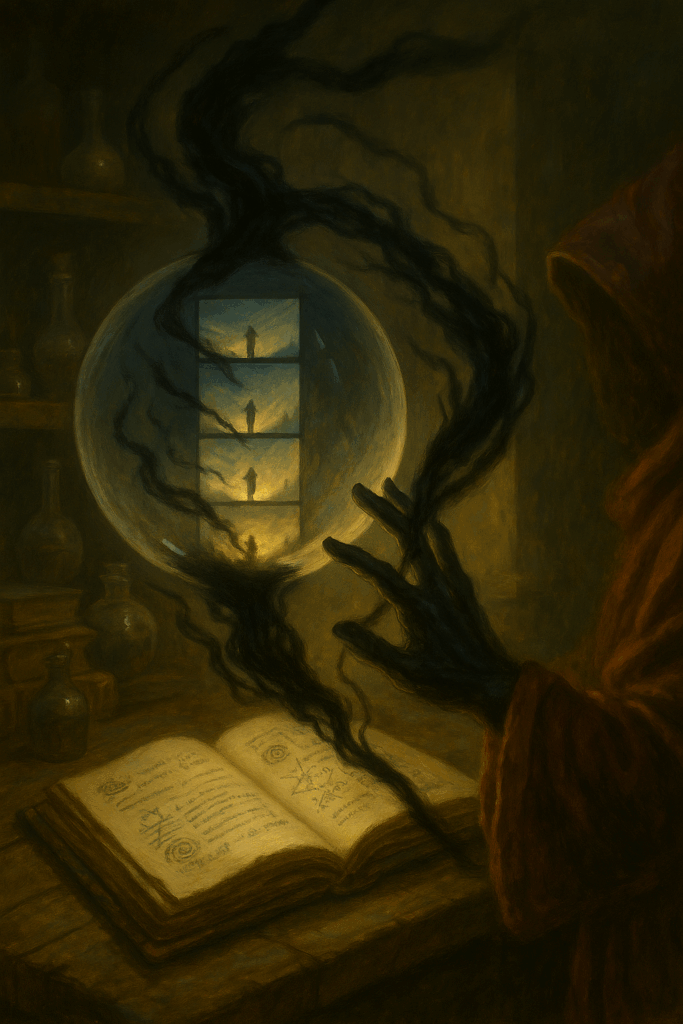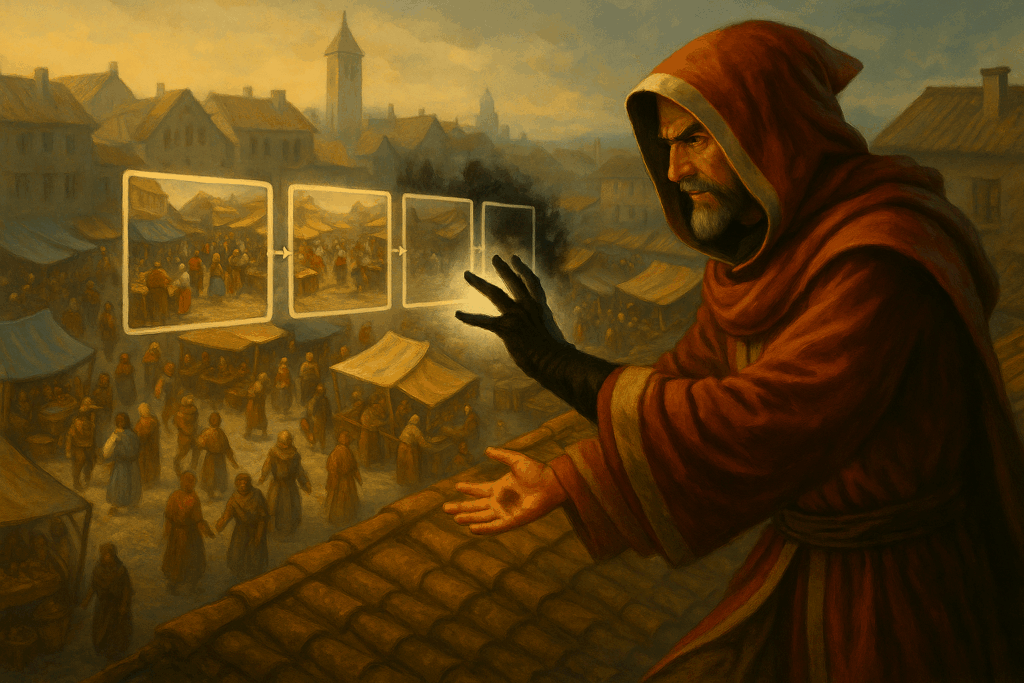“You’re not a Chronomancer. You’re just a Temporalist, leading a hive of Temporalists through a temporal reality too fragile to withstand the Unraveling.” – Dalton Marius the 100th to Dalton Marius the 99th
In Wuh-Zhei’s fracturing arcane society, Chronomancy is both revered and misunderstood.
Each of the five sanctioned wizard factions is a fusion of opposing schools. Evocation and Abjuration, Necromancy and Conjuration, Enchantment and Transmutation, Illusion and Divination. But Chronomancy? Chronomancy is supposed to be two opposing schools too.
It no longer is.
What we call Chronomancers today are, in truth, just Temporalists. They are mages who manipulate the flow and order of time. They accelerate initiative, delay reactions, loop actions, and fast-forward entropy. Powerful, yes. Dangerous, certainly. But incomplete.
Everything you know as Chronomancy that’s ever been printed in a spellbook that you have read is Temporal magic. The people you’ve read about in your silly little ‘Players Handbook’ or whatever supplemental material on Chronomancy actually just describes a Temporalist. True Chronomancy was banned when the last arcane nail was magically placed by Completion magic into the Gods’ arcane coffin.
True Chronomancers once wielded Completion Magic alongside Time Magic. Together, Time and Completion defined Chronomancy. One to stretch the thread, the other to cut it. Time magic is a flowing force. Completion is a point. Time stretches and loops the thread. Completion cuts it and then ties and secures it. Without Completion, there’s no tension. No balance. Just delay masquerading as control.

The School of Completion
Completion was the school of thresholds, balance, reciprocation, endpoints, and absolutes. Instead of effecting when things happened, they decided whether something would end at all.
A Completionist could end a creature’s turn mid-action, kill them the moment their hit points drop to zero, or lock a saving throw from the possibility of rerolls before its even begun. No second chances. No rewinds. Just resolution.
It was too powerful. Too final.

When the gods fell, Completion Magic didn’t kill them, it published their deaths. Not in ink, but in permanence. Their end was chiseled into reality, final and uneditable. Wish all you like, but once a story is complete and bound, you don’t get a rewrite.
The Senate, terrified by what this meant, outlawed Completion. They erased its name from the spellbooks. But they let the term “Chronomancer” survive. A mark of status, a memory, a lie. A sigil without a spell.
The Last True Chronomancer
Dalton Marius the 100th, Senator, heretic, self-imposed exile… he believed the ban was a mistake.
As the Unraveling drew closer, Dalton Marius petitioned the factions to lift the seal on Completion Magic. Time, he argued, was a bandage, not a cure. Only Completion could finalize the world’s collapse into something stable and survivable.
They refused him. So he disappeared.
In exile, Dalton cracked the seal and became something the world hadn’t seen in over a century: a true Chronomancer. Then he cast his final spell that would become known as The Chronomancer’s Gambit.
Using his own death as a fixed point, Dalton sealed a looping timeline. A perfect arc, recursive and self-contained. The players awaken on the day of his funeral. That same night ends in disaster, a catastrophic arcane bombing. Everyone dies.
Then the day resets.
And only the players remember.
The Loop Is the Solution. The Loop Is the Problem.
Dalton Marius was right. Completion Magic was necessary to preserve the city long enough to find an answer. But the Senate was also right: Completion is uncontrollable.
The loop is perfect. That’s the problem.
It can’t be broken. It can be escaped.
For the final act of the campaign, after the players succeed where no one else could, after they solve the puzzle of the Unraveling and find a way to save the world… they realize:
They can’t leave.
The loop is complete.
And Completion Magic doesn’t allow open endings.
The Path Forward
To escape the Gambit, they must step outside of time itself. They must confront the unraveling void that devours existence and face the Un-Dragon, the conceptual embodiment of decay, finality, and oblivion.
You can’t unmake the loop.
You can’t turn back the clock.
But you can step beyond sequence and structure into the Unraveling itself.
There, past paradox and permanence, the players must find a way to carry Wuh-Zhei back with them.
Because in the end, time is just the editor.
Completion is the export.